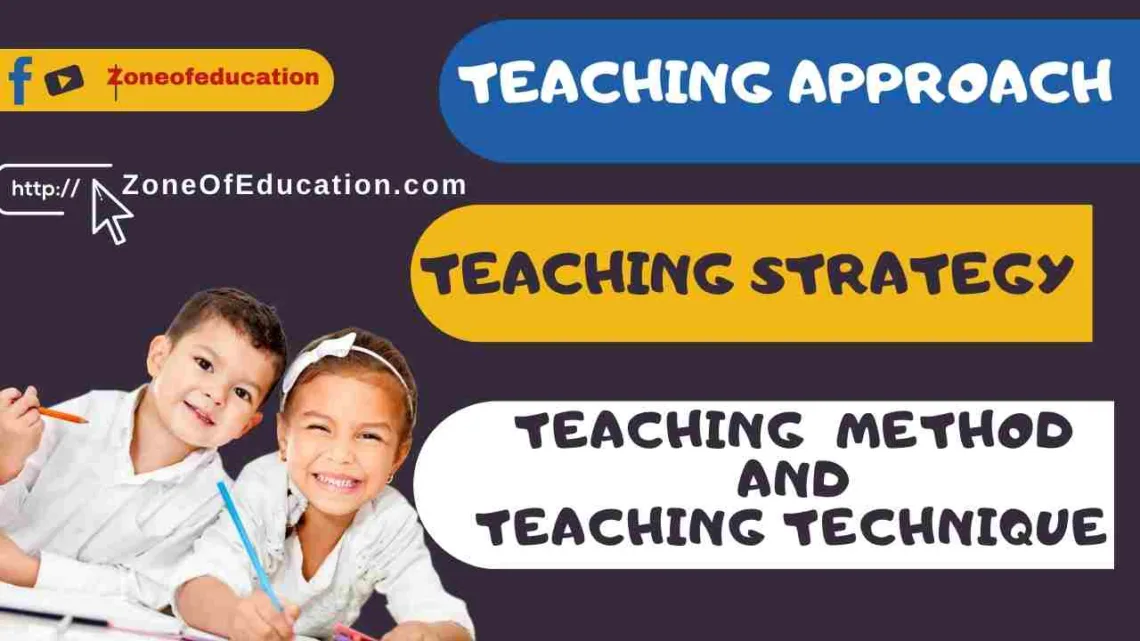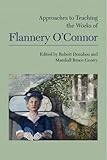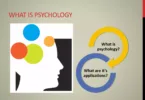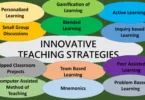Teaching can be confusing because of all the different words we use. Here, we have tried to make things clearer by explaining the differences between teaching approaches, methods, procedures, techniques, styles, and strategies.
Teachers often come across terms like teaching approaches, methods, procedures, techniques, styles, and strategies. But here’s the thing: not everyone understands these words in the same way. Some teachers use them interchangeably, mixing up what they mean. Others are very careful to use each word correctly to talk about different aspects of teaching.
Education is an enriching experience that involves several facets, of which the teaching approach, strategy, method, and technique are fundamental components. These aspects serve as a roadmap to guide the teaching-learning process, each having its unique attributes, while harmoniously operating in integration with others.
The Teaching Approach
An approach can be described as the manner in which a teacher addresses the process of teaching and learning. It essentially comprises a broad, theoretical framework that sets the general direction of an entire learning journey. As an overarching principle, the approach defines the educator’s beliefs and values relating to teaching, creating a foundation for instructional decision-making
Approaches could focus on the development of learners’ capabilities, enactment of effective learning experiences, or fostering critical thinking, and may include elements such as student-centered learning, thematic teaching, or problem-based learning.
Teaching Strategy
A strategy, on the other hand, is a more specific means through which the teaching approach can be executed. As advised in , the strategy acts as a general rule or principle to guide the whole teaching process. Once a teaching approach is chosen, subsequent strategies should align with the approach to ensure a consistent plan of action.
For example, if an approach prioritizes active learning, strategies could encompass group work, peer teaching, and case studies. A well-chosen strategy lays the groundwork for designing learning situations and aids developers in creating effective materials.
Teaching Method
Progressing down to more explicit procedures, a teaching method serves as the concrete mechanism by which learning is facilitated, concentrating on how to deliver instructions effectively . The strategy determines which method to employ, ensuring that it supports the corresponding teaching approach.
Methods may involve direct instruction, where the teacher introduces the content in a well-organized way, or project-based learning, which enables learners to gain knowledge and skills by conducting extensive research over a specified period.
Teaching Technique
Lastly, techniques are the specific actions taken within the teaching method. These can be seen as practical tools or maneuvers employed in the classroom to facilitate understanding of instructions given. Techniques can vary greatly, even within the same method. For instance, within the method of direct instruction, techniques might involve lecturing, questioning, demonstrating, or using audiovisual aids.
From these definitions and distinctions, it can be seen that approaches, strategies, methods, and techniques are interrelated tiers in the teaching-learning process. They work cumulatively from the general to the specific to generate an effective learning environment, ensuring that teaching aligns with educators’ values and beliefs while also meeting the diverse needs of learners. Emphasizing the concept and classification of these aspects promotes an integrated way towards improving education quality and refining learning experiences.
Utilizing various combinations of the above concepts allows educators to be prepared with a flexible game plan. With concrete knowledge about these aspects, educators can effectively navigate the complexity of teaching while tailoring instruction to align with students’ diverse learning paths.
Understanding and implementing the teaching approach, strategy, method, and technique in cohesion is critical for an enriching learning experience. They serve as guiding pillars that frame the teaching-learning process, enabling a structured pathway to successful pedagogy. By considering these aspects, educational systems can improve the quality of instruction and pave the way for innovative teaching methodologies. Optimal use of these foundational components can result in enhancing student engagement, fostering meaningful comprehension, and ultimately, shaping brighter futures
Why does this matter? Well, teachers need to know exactly what each word means. This helps us communicate better with other educators and create better lessons for our students.
Teaching approaches are big ideas that guide how we teach. They’re like the main principles behind our teaching, showing us what we believe about what should be learned and taught. Teaching methods, on the other hand, are more practical. They’re like the step-by-step plans we use to teach our lessons based on those big ideas.
Within these methods, we have teaching procedures, which are the specific steps we follow during a lesson. They tell us exactly how to introduce, practice, and reinforce language concepts in class.
Then there are teaching techniques. These are the little tricks and tools we use within our procedures to help students learn better. They can be things like games, discussions, or visual aids that make learning more fun and engaging.
Teaching styles are about how each teacher likes to teach. They’re based on our personalities, beliefs, and teaching philosophies. Our style affects how we interact with students and how our classrooms feel.
Lastly, teaching strategies are our big plans for teaching over time. They bring together all the different approaches, methods, and techniques we use in our teaching. These strategies help us set long-term goals, plan our lessons, and manage our classrooms effectively.
Understanding the differences between these terms is super important for language teachers. It helps us plan better lessons, communicate with other teachers, and make sure our students are learning as much as possible. So, by knowing what each word means, we can become better teachers and help our students succeed.
Before diving into the main terms, let’s break down their components: teaching, methods, techniques, approach, and strategies.
The teaching approach refers to a set of principles or beliefs about how people learn that guide classroom practice. It’s like a guiding philosophy for teaching, providing a framework for instruction. The approach gives a broad perspective, sets the direction, and establishes expectations for teaching.
Methods and techniques are just parts of the approach. Methods are organized procedures aimed at facilitating learning, usually considering the abilities and interests of learners. They’re like the structured plans teachers use to achieve specific instructional goals.
Techniques, on the other hand, are the personal styles or methods teachers use to carry out specific teaching steps. They’re like the individual touches that make teaching effective and engaging.
Teaching, according to the Merriam-Webster Dictionary (2016), is the act of imparting knowledge or skills to others. It includes both instructing students in procedures and challenging them to think critically about concepts.
Methods, as defined by Dictionary.com, are procedures or ways of doing something according to a plan. They provide a systematic approach to instruction, investigation, or presentation.
Techniques, defined by the Oxford Advanced Learner’s Dictionary (2016), are specific ways of carrying out tasks, like new surgical techniques for faster treatment. Approaches, as per the Cambridge Dictionary (2016), refer to ways of considering or doing something, such as a person’s approach to life.
Strategies, according to the Merriam-Webster Dictionary (2016), are careful plans for achieving long-term goals. They’re like action plans designed to reach specific objectives over time, like soldiers strategizing to win battles.
Now, based on these definitions, we can define the main terms as follows:
- Teaching methods: Structured procedures aimed at facilitating learning, considering the needs and interests of learners.
- Teaching techniques: Personal styles or methods used by teachers to carry out specific teaching steps effectively.
- Teaching approach: A set of guiding principles or beliefs about learning that shape classroom practice.
- Teaching strategies: Carefully planned actions aimed at achieving long-term educational goals.
Teaching Approaches
Teaching theories are often categorized into two main approaches: teacher-centered and student-centered.
1. Teacher-Centered Approach:
In this model, teachers are the primary authority figures. Students are viewed as passive recipients of information, with the main goal being testing and assessment. Teachers are responsible for imparting knowledge to students through lectures and direct instruction. Teaching and assessment are seen as separate entities, with student learning measured through tests and assessments.
Examples of teacher-centered methods include lectures and whole-group discussions.
2. Student-Centered Approach:
While teachers still hold authority in this approach, both teachers and students actively participate in the learning process. Teachers take on the role of coaches and facilitators, guiding students in their understanding of the material. Student learning is assessed through various methods, including group projects, portfolios, and class participation. Teaching and assessment are integrated, with student learning continuously evaluated during instruction.
Examples of student-centered methods include small group discussions, simulations, and projects.
The teaching approach is the underlying philosophy or viewpoint guiding teaching and learning. It shapes how teachers perceive language learning and informs their instructional practices. An approach gives rise to teaching methods, which are specific ways of teaching that use classroom activities or techniques to help learners. Examples of teaching approaches include cognitive, behaviorist, and constructivist approaches to learning.
Teaching Techniques
Teaching techniques are the unique ways teachers carry out specific tasks in the teaching and learning process. They reflect individual teachers’ approaches and styles in applying teaching strategies. For instance, two teachers may use small group discussions to deliver a lesson, but each may have a different approach to conducting the discussion.
Teaching techniques consist of a broad spectrum of methods and approaches used by educators to facilitate the learning process. These techniques are not only diverse but also dynamic, often adapting to the needs of the students, the subject matter, and the learning environment. At the heart of teaching techniques lies the intention to engage students, promote understanding, and foster a conducive learning atmosphere.
One commonly used teaching technique is the use of small group discussions. This method involves breaking the class into smaller groups to facilitate peer interaction and collaboration. However, how teachers conduct these discussions can vary significantly. Some may opt for structured discussions with predefined topics and guidelines, while others may encourage more open-ended conversations allowing for free-flowing exchange of ideas.
The use of multimedia tools and technology in the classroom is another prevalent teaching technique. From PowerPoint presentations to interactive whiteboards and educational apps, educators leverage various digital resources to enhance instruction and cater to diverse learning styles. Yet, the effectiveness of these tools often hinges on how well they are integrated into the curriculum and complement the learning objectives.
Active learning techniques, such as problem-based learning and hands-on activities, also play a crucial role in modern pedagogy. These approaches prioritize student engagement and participation, encouraging learners to apply theoretical knowledge to real-world scenarios. Immersing students in experiential learning opportunities, educators aim to deepen understanding and foster critical thinking skills.
Differentiation is a key aspect of effective teaching techniques. Recognizing that students possess varying abilities, interests, and learning styles, teachers use strategies to accommodate these differences and ensure equitable access to education. This may involve providing personalized instruction, offering alternative assessments, or adapting the curriculum to cater to diverse needs.
Inclusive teaching techniques are also gaining prominence in educational settings. With a focus on equity and accessibility, educators strive to create inclusive learning environments where all students feel valued and supported. This may entail incorporating universal design principles, promoting diversity in curriculum materials, and adopting culturally responsive teaching practices.
Collaborative learning techniques, such as group projects and peer teaching, foster teamwork and communication skills among students. By working together towards common goals, learners develop interpersonal skills and gain a deeper appreciation for collective achievement. Moreover, collaborative learning encourages active participation and empowers students to take ownership of their learning journey.
Reflective practices are integral to effective teaching techniques. Educators routinely evaluate their teaching methods, seek feedback from students, and make adjustments based on assessment data. By engaging in reflective inquiry, teachers continuously refine their pedagogical approach and strive for continuous improvement.
Teaching techniques consist a diverse array of methods and approaches aimed at enhancing the teaching and learning experience. From small group discussions to multimedia presentations, and active learning activities to inclusive practices, educators use a variety of strategies to engage students, promote understanding, and foster a supportive learning environment. Using innovation, differentiation, collaboration, and reflection, teachers empower students to reach their full potential and become lifelong learners.
Teaching strategy
A teaching strategy is a carefully planned set of activities aimed at achieving specific teaching and learning goals. It involves deciding on the most effective teaching method, whether teacher-centered or student-centered, and planning activities to facilitate learning. Teaching strategies evolve from teaching methods and define the components of each method.
Teaching strategy is the deliberate and systematic approach that educators use to guide the teaching and learning process toward specific objectives. It serves as a roadmap for instructors to effectively convey information, engage students, and foster deep understanding. At its core, a teaching strategy involves thoughtful consideration of various factors, including instructional methods, learning styles, and classroom dynamics.
Central to the concept of teaching strategy is the distinction between teacher-centered and student-centered approaches. In a teacher-centered approach, the instructor takes on a more directive role, leading the class through structured lessons and delivering content through lectures or demonstrations. Conversely, a student-centered approach prioritizes active participation and autonomy, with students playing a more active role in their learning through activities such as discussions, projects, and problem-solving tasks.
The selection of an appropriate teaching strategy depends on the specific learning goals, the nature of the subject matter, and the characteristics of the students. For example, a teacher may opt for a lecture format to deliver foundational knowledge in a content-heavy course, while incorporating group discussions and hands-on activities to reinforce concepts and encourage critical thinking.
Effective teaching strategies consist of a range of activities designed to engage learners, promote comprehension, and support retention. These activities may include:
Lectures: Traditional lectures remain a valuable tool for conveying information and providing context. However, to enhance engagement, instructors may incorporate multimedia elements, interactive components, and opportunities for questions and discussion.
Group Work: Collaborative learning activities, such as group projects, case studies, and problem-solving tasks, encourage peer interaction and foster teamwork skills. By working together, students can explore diverse perspectives and deepen their understanding of the subject matter.
Active Learning: Active learning techniques, such as simulations, role-playing exercises, and hands-on experiments, promote student engagement and facilitate deeper learning. These activities encourage students to apply theoretical concepts in practical contexts, enhancing comprehension and retention.
Feedback and Assessment: Providing timely and constructive feedback is essential for guiding student learning and assessing progress. Formative assessments, such as quizzes, discussions, and peer evaluations, allow instructors to gauge understanding and tailor instruction accordingly.
Technology Integration: Leveraging technology tools, such as online platforms, multimedia resources, and interactive simulations, can enrich the learning experience and cater to diverse learning styles. Technology integration also enables remote learning and facilitates access to educational resources beyond the classroom.
Differentiation: Recognizing that students have unique abilities, interests, and learning styles, instructors may use differentiated instruction techniques to accommodate diverse needs. This may involve adjusting the pace of instruction, providing alternative assignments, or offering additional support to struggling learners.
Reflection and Metacognition: Encouraging students to reflect on their learning experiences and think critically about their thinking (metacognition) promotes deeper understanding and enhances learning outcomes. Journaling, self-assessment exercises, and guided reflections can facilitate this process.
Teaching strategy consists of the deliberate planning and implementation of activities aimed at achieving specific teaching and learning goals. By selecting appropriate instructional methods, engaging students through various activities, and providing meaningful feedback, educators can create dynamic and effective learning environments conducive to student success.
Teaching Method
Teaching methods refer to the various approaches and techniques educators use to facilitate learning in the classroom. These methods encompass a wide range of instructional strategies and activities designed to engage students, convey information, and promote understanding. Effective teaching methods are tailored to the specific learning goals, subject matter, and needs of the students.
1. Lecture: The lecture method is a traditional approach where the teacher presents information to the class through verbal explanation. Lectures can be supplemented with visual aids such as slides or whiteboards to enhance comprehension. While lectures are useful for delivering content efficiently, they should be interactive to maintain student engagement.
2. Discussion: Discussion-based methods encourage active participation and critical thinking among students. Teachers facilitate discussions by posing open-ended questions, encouraging debate, and guiding students to explore different perspectives. This method fosters collaboration, communication skills, and a deeper understanding of the subject matter.
3. Demonstration: Demonstration involves showing students how to perform a task or use a tool or equipment. This method is commonly used in science laboratories, vocational training, and performing arts classes. By observing demonstrations, students gain practical skills and visual reinforcement of theoretical concepts.
4. Hands-on Activities: Hands-on or experiential learning activities provide students with opportunities to actively engage with the material through practical application. This may include experiments, simulations, role-playing exercises, and project-based learning. Hands-on activities promote active learning, problem-solving skills, and retention of information.
5. Collaborative Learning: Collaborative learning methods emphasize teamwork and peer interaction. Group projects, cooperative learning activities, and peer teaching are examples of collaborative approaches where students work together to achieve common goals. Collaborative learning fosters social skills, communication, and a sense of community in the classroom.
6. Problem-Based Learning (PBL): In problem-based learning, students are presented with real-world problems or scenarios and work collaboratively to find solutions. PBL encourages critical thinking, problem-solving skills, and the application of knowledge in practical contexts. It also promotes self-directed learning and autonomy.
7. Flipped Classroom: In a flipped classroom model, students engage with course materials, such as lectures or readings, independently outside of class, while class time is dedicated to interactive activities, discussions, and hands-on exercises. This approach allows for more personalized instruction and active learning during face-to-face sessions.
8. Technology Integration: Integrating technology into teaching methods involves using digital tools, multimedia resources, and online platforms to enhance instruction and student engagement. This may include interactive presentations, educational apps, virtual simulations, and online discussions. Technology integration can facilitate active learning, personalized instruction, and access to resources beyond the classroom.
9. Differentiated Instruction: Differentiated instruction recognizes that students have diverse learning needs, interests, and abilities. Teachers adapt their teaching methods, materials, and assessments to accommodate individual differences and provide multiple pathways to learning. This approach ensures that all students have equitable access to education and opportunities for success.
10. Socratic Method: The Socratic method is a form of questioning where the teacher prompts students to explore ideas, analyze arguments, and arrive at conclusions through guided inquiry. This method encourages critical thinking, reasoning skills, and intellectual curiosity.
Effective teaching methods are characterized by flexibility, adaptability, and alignment with learning objectives. By selecting appropriate instructional strategies and activities, educators can create dynamic and engaging learning experiences that meet the diverse needs of their students.
Differences and Relationships:
From the definitions provided by various dictionaries, it’s evident that teaching approach, method, strategy, and technique are distinct terms and cannot be used interchangeably. An approach reflects one’s perspective, a strategy is a planned activity, a method is a procedure, and a technique is a unique way of carrying out a task.
However, these terms are related. Teaching approaches inform the development of teaching methods, which in turn give rise to teaching strategies. Teaching techniques provide unique ways of implementing teaching strategies.
Below is a table illustrating examples of the differences and similarities in the use of these terms:
Below is a comparative table highlighting the differences between teaching approaches, methods, procedures, techniques, styles, and strategies:
| Aspect | Teaching Approach | Teaching Method | Teaching Procedure | Teaching Technique | Teaching Style | Teaching Strategy |
| Definition | Philosophical orientation | Systematic instructional plan | Detailed sequence of actions | Unique way of carrying out tasks | Personal teaching manner | Carefully planned activities |
| Focus | Broad principles and beliefs | Specific instructional steps | Orderly course of actions | Individualized teaching methods | Personal teaching preferences | Long-term educational goals |
| Role of Teacher | Guides overall philosophy | Implements instructional plan | Follows step-by-step process | Applies specific teaching method | Reflects individual personality | Plans instructional activities |
| Role of Student | Receives instruction passively | Engages in learning activities | Follows instructional steps | Participates actively in tasks | Experiences teacher’s approach | Achieves learning objectives |
| Measurement | Theoretical perspective | Practical implementation | Detailed execution of actions | Personalized application | Subjective teaching manner | Outcome-based achievement |
| Examples | Constructivist, behaviorist | Lecture, group discussion | Introduction, practice, reinforcement | Pair work, brainstorming | Authoritative, facilitative | Project-based, inquiry-based |
Activity:
Identify whether each sentence suggests an approach, method, or technique:
1. A procedural variation of a teaching strategy. – Technique
2. A general rule or principle that guides the whole process of teaching. – Approach
3. A sound philosophy and orientation, which used as bases in the process of instruction. – Approach
4. Guiding students by following an established pattern/steps of teaching. – Method
5. A highly personalized style of carrying out a particular step. – Technique
6. A viewpoint that suggests what teaching procedure is to be used. – Approach
7. Implementation due to its instant classroom application. – Technique
8. Embracing the entire spectrum of the teaching – learning process. – Approach
9. Procedural in nature since it is a series of logically arranged courses of action. – Method
10. An overall plan for the orderly presentation of a lesson. – Strategy
11. Guiding teaching from planning to evaluate. – Approach
12. Making teaching an organized and systematic process. – Method
13. Developing the teacher’s own distinctive way of carrying out some aspect of instruction. – Technique
14. Teaching is done following a well spell-out procedure. – Method
15. An example of which is looking at the learner as the center of the educative process. – Approach






















[…] questions related to learning. In short, the study of the teaching-learning process environment and methods of teaching are some important topics of Educational […]
[…] childhood, and adolescence. As a consequence, great stress was placed on adopting different techniques of teaching at each one of these […]
[…] Methods encompass various approaches, from Phenomenology to Grounded Theory and Ethnography. To understand the important components of […]
[…] approach that focuses on checking for understanding and making adjustments accordingly. This approach includes strategies like Red/Amber/Green (RAG) ratings, low-stakes assessments, starter quizzes, directed questioning, […]
[…] Instructional Practices: Assessment data provides valuable insights into the effectiveness of teaching methods and curriculum. By analyzing the results, educators can identify areas where students struggle or […]
[…] teaching methods in the classroom use a system of rewards for desired actions and punishments for undesirable ones. […]
Stumbling upon this website was such a delightful find. The layout is clean and inviting, making it a pleasure to explore the terrific content. I’m incredibly impressed by the level of effort and passion that clearly goes into maintaining such a valuable online space.
[…] to multiple learning styles, facilitating information retention and deeper comprehension. Various strategies and methods are employed to ensure equal opportunities for all students to learn. A lesson plan can be executed […]
[…] and Correctives: Provide feedback and correct errors during guided practice, adjusting teaching strategies based on student […]
[…] The Socratic Method is an instructional technique that involves questioning, dialogue, and inquiry to stimulate critical thinking and uncover deeper […]
[…] A heuristic teaching method is a student-centred approach that emphasizes critical thinking, problem-solving, and creativity. It encourages students to take […]
[…] it is essential to note that traditional teaching methods are not the only way to implement Perennialism in the classroom. Many educators also emphasize the […]
[…] In the existentialist approach, the teacher’s supreme duty is to ensure students understand the presented material. This means using different teaching methods, like visual aids and hands-on activities, to help students understand complex ideas. Teachers can help students succeed academically and personally by taking a proactive approach to teaching. […]
[…] positive method or positive learning in Naturalism is a teaching method that emphasizes the use of positive reinforcement and encourages learners to develop their […]
[…] thinking in education provides a practical and learner-centred approach to teaching and learning. It strongly emphasizes the value of functional outcomes, learner-centred instruction, […]
[…] innovative teaching strategies involves recognizing their diverse approaches, including flipped classrooms, project-based learning, gamification, personalized learning, […]
[…] Discovery Method is a structured technique used to solve problems efficiently by applying learned knowledge, skills, and strategies to […]
[…] applicable, introduce the treatment or intervention to the participants. This could be a teaching method, a program, or any variable you’re studying. In a pre-experimental design, there might not be a […]
[…] lies in its ability to raise the standard of teaching. They are critical of the traditional methods of teaching because they believe in constant […]
[…] to change teaching strategies based on […]
[…] paradigms dictate researchers’ methods and approaches to investigating phenomena. The underlying paradigm has a significant impact on the methods chosen, […]